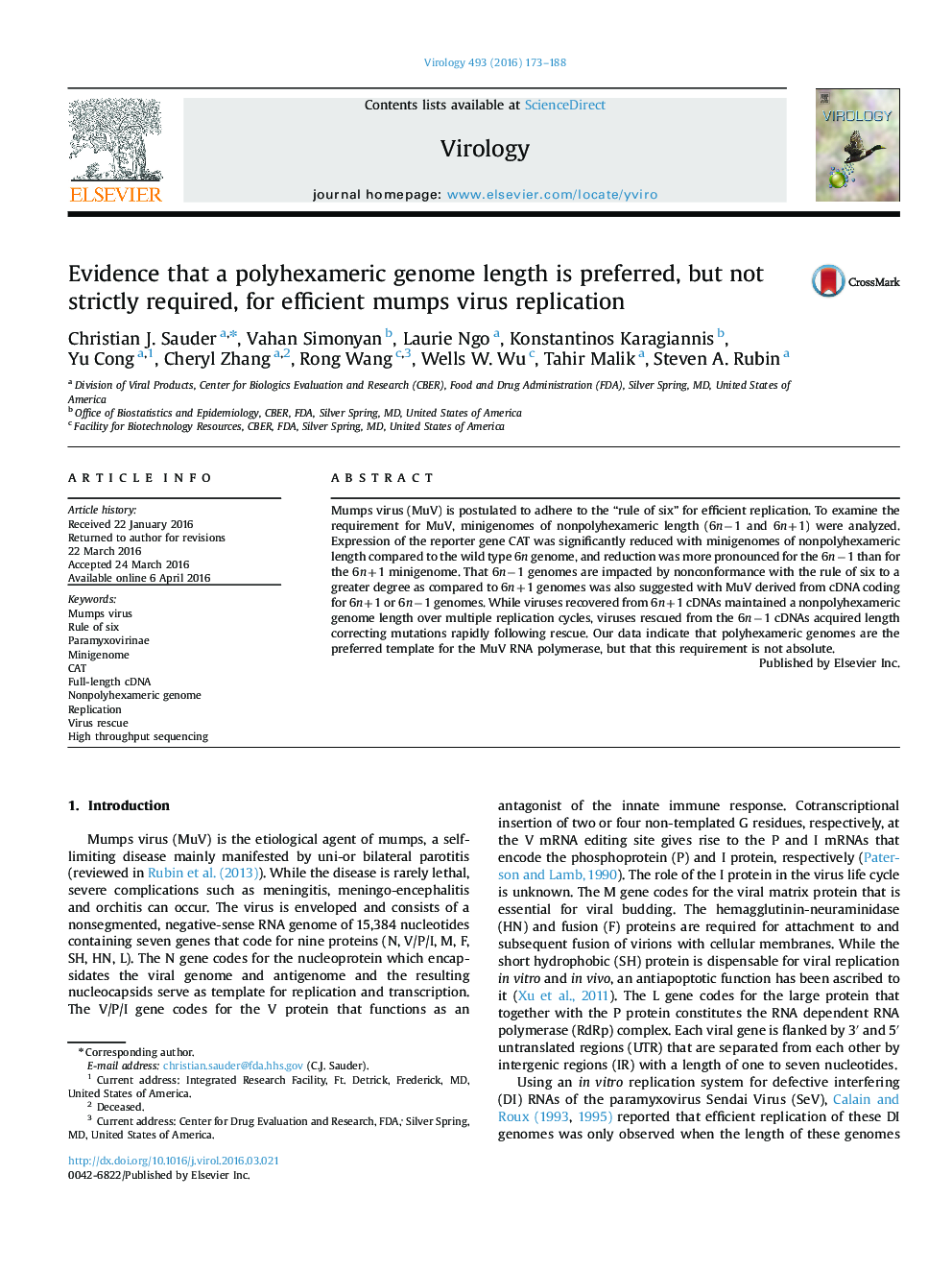| کد مقاله | کد نشریه | سال انتشار | مقاله انگلیسی | نسخه تمام متن |
|---|---|---|---|---|
| 6138566 | 1594224 | 2016 | 16 صفحه PDF | دانلود رایگان |

- Analyzed the requirement for mumps virus to adhere to the “rule of six”.
- CAT expression was strongly reduced with minigenomes of nonpolyhexameric length.
- Reduction was more pronounced for 6nâ1 than for the 6n+1 minigenomes.
- 6n+1 cDNA derived viruses maintained a 6n+1 genome length over three cell passages.
- 6nâ1 cDNA derived viruses acquired length correcting mutations rapidly in vitro.
Mumps virus (MuV) is postulated to adhere to the “rule of six” for efficient replication. To examine the requirement for MuV, minigenomes of nonpolyhexameric length (6nâ1 and 6n+1) were analyzed. Expression of the reporter gene CAT was significantly reduced with minigenomes of nonpolyhexameric length compared to the wild type 6n genome, and reduction was more pronounced for the 6nâ1 than for the 6n+1 minigenome. That 6nâ1 genomes are impacted by nonconformance with the rule of six to a greater degree as compared to 6n+1 genomes was also suggested with MuV derived from cDNA coding for 6n+1 or 6nâ1 genomes. While viruses recovered from 6n+1 cDNAs maintained a nonpolyhexameric genome length over multiple replication cycles, viruses rescued from the 6nâ1 cDNAs acquired length correcting mutations rapidly following rescue. Our data indicate that polyhexameric genomes are the preferred template for the MuV RNA polymerase, but that this requirement is not absolute.
Journal: Virology - Volume 493, June 2016, Pages 173-188